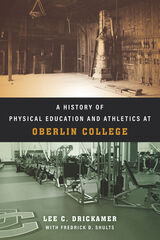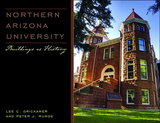3 books about Drickamer, Lee C.

Foundations of Animal Behavior
Classic Papers with Commentaries
Edited by Lynne D. Houck and Lee C. Drickamer
University of Chicago Press, 1996
Beginning with Darwin's work in the 1870s, Foundations of Animal Behavior selects the most important works from the discipline's first hundred years—forty-four classic papers—and presents them in facsimile, tracing the development of the field. These papers are classics because they either founded a line of investigation, established a basic method, or provided a new approach to an important research question.
The papers are divided into six sections, each introduced by prominent researchers. Sections one and two cover the origins and history of the field and the emergence of basic methods and approaches. They provide a background for sections three through six, which focus on development and learning; neural and hormonal mechanisms of behavior; sensory processes, orientation, and communication; and the evolution of behavior.
This outstanding collection will serve as the basis for undergraduate and graduate seminars and as a reference for researchers in animal behavior, whether they focus on ethology, behavioral ecology, comparative psychology, or anthropology.
Published in association with the Animal Behavior Society
The papers are divided into six sections, each introduced by prominent researchers. Sections one and two cover the origins and history of the field and the emergence of basic methods and approaches. They provide a background for sections three through six, which focus on development and learning; neural and hormonal mechanisms of behavior; sensory processes, orientation, and communication; and the evolution of behavior.
This outstanding collection will serve as the basis for undergraduate and graduate seminars and as a reference for researchers in animal behavior, whether they focus on ethology, behavioral ecology, comparative psychology, or anthropology.
Published in association with the Animal Behavior Society
[more]

A History of Physical Education and Athletics at Oberlin College
Lee C. Drickamer with Frederick D. Shults
The Ohio State University Press, 2022
Since the late nineteenth century, Oberlin College has been a leader in training physical education teachers. The skill and mentoring of founders like Delphine Hanna produced a generation of men and women who were among the most important individuals in the structuring of physical education and in the formation of professional societies in the areas of recreation, athletics, and physical education. Lee C. Drickamer and Frederick D. Shults document the full scope of Oberlin’s physical education and athletics programs, beginning with learning and labor in the mid-nineteenth century and chronicling the evolution of virtually every team, facility, curriculum, societal change, and philosophic stance thereafter. Touching on the mind-body duality, New Physical Education, and the ever-increasing emphasis on winning athletic contests, Drickamer and Shults remind readers of Oberlin’s long history of supporting societal changes and innovation. This process is brought full circle with the current emphasis on health and wellness, again focusing on the mind-body connection.
[more]

Northern Arizona University
Buildings as History
Lee C. Drickamer and Peter J. Runge
University of Arizona Press, 2011
Any university is composed of faculty, students, and staff. But these living components change over time and in varying degrees, while the campus buildings are more permanent, remaining for decades, a century, or longer.
This book looks at the buildings that have graced the campus of Northern Arizona University from its opening in 1898 to the present. The school began with a single building, Old Main, and it was joined by five other structures prior to World War I. In the following decades the campus remained relatively small, expanding to approximately twenty-five structures by the late 1950s. During the tenure of President J. Lawrence Walkup (1957–1979), the university effectively doubled in size, spreading southward and adding more than forty buildings, including an entire south campus academic center. Since 1979 the campus has witnessed the addition of more than thirty structures, most as infill within the existing campus layout.
Arranged chronologically, this extensively illustrated volume briefly describes the history of every building that has been a part of the university’s physical layout. The authors describe various structural aspects of each building and provide entertaining and informative anecdotes about events and people associated with the structures. By combing the university’s archives, Drickamer and Runge have turned up photographs of each building as it looked shortly after construction and at present, providing a fascinating visual time lapse.
With more than two hundred images of campus buildings, many of them never before published, Northern Arizona University: Buildings as History provides a wonderful pictorial chronicle of the campus that will interest architectural historians as well as all those who have called NAU home.
This book looks at the buildings that have graced the campus of Northern Arizona University from its opening in 1898 to the present. The school began with a single building, Old Main, and it was joined by five other structures prior to World War I. In the following decades the campus remained relatively small, expanding to approximately twenty-five structures by the late 1950s. During the tenure of President J. Lawrence Walkup (1957–1979), the university effectively doubled in size, spreading southward and adding more than forty buildings, including an entire south campus academic center. Since 1979 the campus has witnessed the addition of more than thirty structures, most as infill within the existing campus layout.
Arranged chronologically, this extensively illustrated volume briefly describes the history of every building that has been a part of the university’s physical layout. The authors describe various structural aspects of each building and provide entertaining and informative anecdotes about events and people associated with the structures. By combing the university’s archives, Drickamer and Runge have turned up photographs of each building as it looked shortly after construction and at present, providing a fascinating visual time lapse.
With more than two hundred images of campus buildings, many of them never before published, Northern Arizona University: Buildings as History provides a wonderful pictorial chronicle of the campus that will interest architectural historians as well as all those who have called NAU home.
[more]
READERS
Browse our collection.
PUBLISHERS
See BiblioVault's publisher services.
STUDENT SERVICES
Files for college accessibility offices.
UChicago Accessibility Resources
home | accessibility | search | about | contact us
BiblioVault ® 2001 - 2024
The University of Chicago Press









